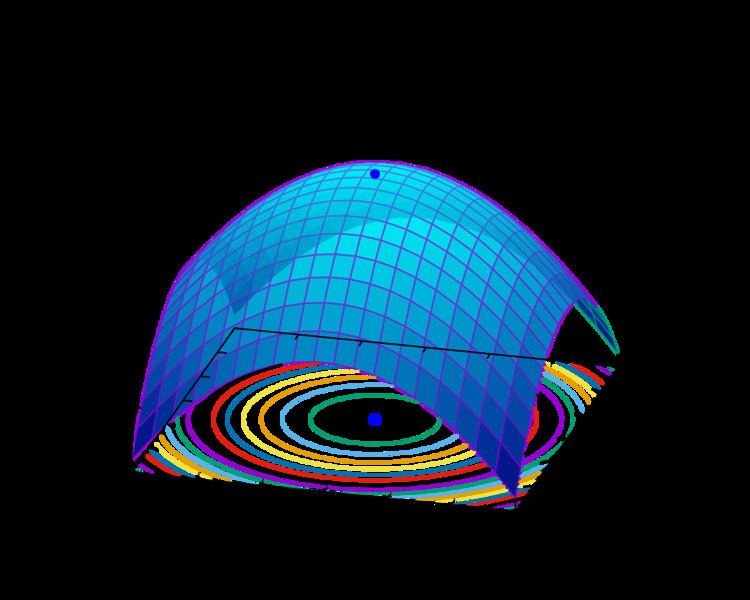 | ||
The Davidon–Fletcher–Powell formula (or DFP; named after William C. Davidon, Roger Fletcher, and Michael J. D. Powell) finds the solution to the secant equation that is closest to the current estimate and satisfies the curvature condition (see below). It was the first quasi-Newton method to generalize the secant method to a multidimensional problem. This update maintains the symmetry and positive definiteness of the Hessian matrix.
Given a function
and the Taylor series of the gradient itself (secant equation):
is used to update
where
and
The DFP formula is quite effective, but it was soon superseded by the BFGS formula, which is its dual (interchanging the roles of y and s).
